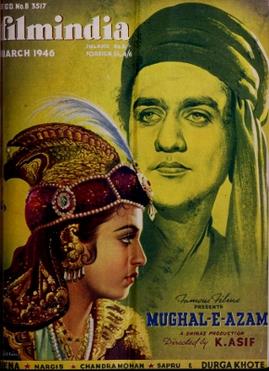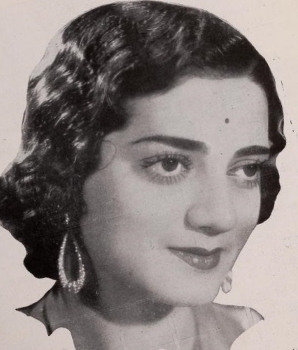The Fox Film Corporation was an American independent company that produced motion pictures and was formed in 1915 by the theater "chain" pioneer William Fox. It was the corporate successor to his earlier Greater New York Film Rental Company and Box Office Attraction Company.

A newsreel is a form of short documentary film, containing news stories and items of topical interest, that was prevalent between the 1910s and the mid 1970s. Typically presented in a cinema, newsreels were a source of current affairs, information, and entertainment for millions of moviegoers. Newsreels were typically exhibited preceding a feature film, but there were also dedicated newsreel theaters in many major cities in the 1930s and ’40s, and some large city cinemas also included a smaller theaterette where newsreels were screened continuously throughout the day.
Movietone News was a newsreel that ran from 1928 to 1963 in the United States. Under the name British Movietone News, it also ran in the United Kingdom from 1929 to 1986, in France also produced by Fox-Europa, in Spain in the early 1930s as Noticiario Fox Movietone before being replaced by No-Do, in Australia and New Zealand until 1970, and Germany as Fox Tönende Wochenschau. An Indian version called Indian Movietone News ran in 1942 and 1943 before getting replaced by Indian News Parade.

The March of Time is an American newsreel series sponsored by Time Inc. and shown in movie theaters from 1935 to 1951. It was based on a radio news series broadcast from 1931 to 1945 that was produced by advertising agency Batten, Barton, Durstine & Osborn (BBDO). The "voice" of both series was Westbrook Van Voorhis. Produced and written by Louis de Rochemont and his brother Richard de Rochemont, The March of Time was recognized with an Academy Honorary Award in 1937.

The United States Office of War Information (OWI) was a United States government agency created during World War II. The OWI operated from June 1942 until September 1945. Through radio broadcasts, newspapers, posters, photographs, films and other forms of media, the OWI was the connection between the battlefront and civilian communities. The office also established several overseas branches, which launched a large-scale information and propaganda campaign abroad. From 1942 to 1945, the OWI reviewed film scripts, flagging material which portrayed the United States in a negative light, including anti-war sentiment.

Television Newsreel is a British television programme, the first regular news programme to be made in the UK. Produced by the BBC and screened on the BBC Television Service from 1948 to 1954 at 7.30 pm, it adapted the traditional cinema newsreel form for the television audience, covering news and current affairs stories as well as quirkier 'human interest' items, sports and cultural events.
The British Housewives' League is a right-wing, non-party group that seeks to act as the voice of the British housewife, providing advice and encouraging active participation in society. The League seeks to defend the UK's independence and constitution, to promote Christian values, and to discourage excessive state control. In the past the League has campaigned against rationing, identity cards, fluoridation campaigns in the 1950s and UK membership of the European Union.

Vickers Wellington LN514 was a Vickers Wellington bomber built in 1943 in record time, as part of a British propaganda effort during the Second World War.
Jamshed Boman Homi Wadia, commonly referred to as J. B. H. Wadia, was a prominent Bollywood movie director, screenwriter, producer and founder of Wadia Movietone Studio. He was born in prominent Parsi family which hailed from Surat, Gujarat whose ancestral business was ship building. Their family name of Wadia stands for master shipbuilders. In a family of entrepreneurs Wadia is credited with creation of movies involving populist stunt roles including those by Fearless Nadia and bringing concept of stunt actresses in Indian cinema.
The Films Division of India (FDI), commonly referred as Films Division, was established in 1948 following the independence of India. It was the first state film production and distribution unit, under the Ministry of Information and Broadcasting, Government of India, with its main intent being to "produce documentaries and news magazines for publicity of Government programmes" and the cinematic record of Indian history.
Ambalal Jhaverbhai Patel was an Indian photographer and film producer.

Ezra Mir was an Indian film-maker, known for his documentary films.
Sarvottam Badami (1910–2005) was an Indian film director of Hindi, Telugu, and Tamil films. He started his career as a sound recordist for the first talkie in India, Alam Ara (1931). In 1948 he helped set up the Films Division for news-reel and documentaries, where he worked as the chief producer in the newsreel department and also made documentaries. His active years were from 1932 to 1952 when he retired from the Films Division and from making feature films to settle in Bangalore.

Wings on Her Shoulder is a 10-minute 1943 Canadian documentary film, made by the National Film Board of Canada (NFB) as part of the NFB's The World in Action series. The film, directed by Jane Marsh, depicts the role of the Woman's Division in the Royal Canadian Air Force (RCAF) during the Second World War, who freed up men for flying duties.

filmindia is an Indian monthly magazine covering Indian cinema and published in English language.

Sabita Devi (1914–1965) was a Hindi film actress in Indian cinema. She is stated to be one of the "prominent" leading ladies of the "pioneering era" of Indian cinema along with Mehtab, Bibbo, Durga Khote, Gohar, Devika Rani and Seeta Devi. A Jewish by birth, she changed her name to find acceptability in Hindi cinema like the other Anglo-Indian and Jewish actresses of her time, Sulochana, Seeta Devi, Madhuri, and Manorama. After initially working with British Dominion Films Ltd., Calcutta, she shifted to Bombay and performed mainly in films produced by Sagar Movietone with her co-star in most films being Motilal. Some of the popular films with Motilal were Dr. Madhurika (1935) and Kulvadhu (1937) directed by Sarvottam Badami. Their first film together was Shaher Ka Jadoo (1934), which was also Motilal's debut film, and then Lagna Bandhan (1936) both directed by Kaliprasad Ghosh. She acted in Silver King (1935) with Motilal. It was an action film directed by C. M. Luhar, which became a "huge success".

Sagar Movietone also Sagar Films, Sagar Film Company and Sagar Productions was an Indian film production company involved in the making of films for Indian cinema. It was launched by Ardeshir Irani with Chimanlal Desai and Dr. Ambalal Patel in 1929 in Bombay, Maharashtra, India. Sagar was initially started as a branch company of Ardeshir's Imperial Film Company. Several key figures from Imperial, such as Mehboob Khan were shifted to Sagar. The studio was in operation from 1930 to 1939. In 1940, it combined with General Pictures to form National Studios. It made "Parsi theatre based films, mythologicals and stunt movies". Sagar fostered the career of many artists who rose to prominence. Early directors such as Prafulla Ghosh, Sarvottam Badami, Ezra Mir and Nanubhai Vakil were promoted by the company. Mehboob Khan got his first break as a director in Al Hilal in 1935. He was referred to as "the most important alumnus" from Sagar, who went on to become one of Indian cinema's "most influential film-makers".
The history of the Cinema of Botswana comprises film-making in the Southern African country of Botswana, both before and after Botswana's independence.
Leslie Lesser Landau was a British director, film producer, screenwriter, screenplay editor and playwright. He also served as the newsreel editor of British Movietone News from 1929 to 1935 at a time the power of newsreel from a political perspective was first used. He was honoured for landmark film journalism.










